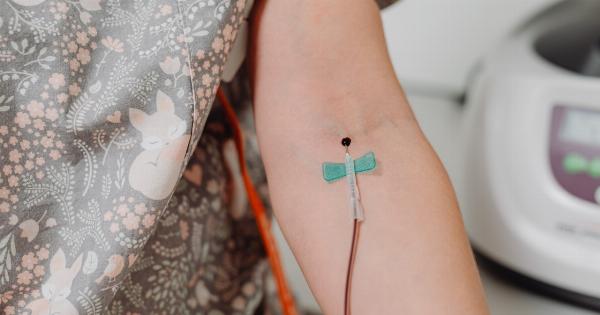Chronic venous failure (CVF) is a common condition that affects millions of people worldwide. It occurs when the valves in the veins of the legs are damaged or weakened, causing blood to pool and flow backward.
This can lead to various symptoms such as leg swelling, pain, and skin changes. If left untreated, CVF can result in serious complications such as leg ulcers and deep vein thrombosis. However, with the right resources and strategies, CVF can be effectively managed and its impact minimized.
Understanding Chronic Venous Failure
Before delving into the resources available for tackling CVF, it is important to have a basic understanding of the condition itself.
CVF is primarily caused by venous hypertension, which occurs when the pressure in the veins increases due to blood flow abnormalities. This increased pressure can be a result of genetic predisposition, obesity, pregnancy, prolonged sitting or standing, and other factors.
Diagnosis and Evaluation
Proper diagnosis and evaluation are essential for effectively managing CVF. It is important to consult a healthcare professional who specializes in venous diseases, such as a vascular surgeon or phlebologist.
They will conduct a comprehensive examination, including a medical history review, physical examination, and diagnostic tests like duplex ultrasound imaging. These evaluations help determine the severity of CVF and rule out any associated conditions.
Lifestyle Modifications
There are several lifestyle modifications that can make a significant difference in managing CVF. These include:.
1. Regular Exercise: Engaging in moderate physical activity, such as walking or swimming, helps promote blood circulation and prevents blood pooling in the legs.
2. Weight Management: Maintaining a healthy weight reduces the strain on the veins, helping improve venous blood flow.
3. Elevating Legs: Raising the legs above heart level for at least 15-30 minutes several times a day helps alleviate swelling and enhances blood circulation.
4. Avoiding Prolonged Standing or Sitting: Taking regular breaks and avoiding prolonged periods of either standing or sitting can help prevent blood from pooling in the legs.
Compression Therapy
One of the cornerstone treatments for CVF is compression therapy. This involves wearing compression stockings or bandages that apply pressure to the legs, helping improve venous return and reducing swelling.
Compression garments come in various strengths and lengths, and the most appropriate type and level of compression should be determined by a healthcare professional.
Medications and Procedures
In some cases, medications may be prescribed to manage the symptoms and progression of CVF. These include:.
1. Venotonic Medications: These medications improve the tone and strength of the veins, enhancing blood flow and reducing symptoms.
2. Anticoagulants: If blood clots are present or there is a risk of clot formation, anticoagulants may be prescribed to prevent complications.
3. Sclerotherapy: This procedure involves injecting a solution into the affected veins, causing them to shrink and close off. It is often used to treat smaller varicose veins.
4. Endovenous Laser Treatment (EVLT): EVLT is a minimally invasive procedure that uses laser energy to heat and seal off problematic veins. It is effective for treating larger varicose veins.
Supportive Resources
Living with CVF can be challenging both physically and emotionally. Thankfully, there are numerous supportive resources available:.
1. Support Groups: Joining support groups or online forums allows individuals with CVF to connect, share experiences, and gain emotional support.
2. Educational Websites: Websites dedicated to venous diseases provide comprehensive information, tips, and resources for managing CVF.
3. Physician Referrals: Healthcare professionals specializing in venous diseases can provide information, guidance, and referrals to relevant specialists.
4. Educational Materials: Brochures, pamphlets, and books on CVF help individuals understand the condition better and empower them for self-care.
Regular Check-ups and Monitoring
Regular check-ups are crucial for individuals with CVF to monitor the condition’s progression and adjust the treatment plan accordingly.
Healthcare professionals can conduct periodic evaluations, assess the effectiveness of treatments, and provide necessary interventions to prevent complications.
Conclusion
Chronic venous failure can significantly impact a person’s quality of life if left unmanaged.
However, by understanding the condition, making lifestyle modifications, utilizing compression therapy, considering medications or procedures, accessing supportive resources, and maintaining regular check-ups, individuals with CVF can effectively tackle the condition and minimize its impact, leading to a healthier and more comfortable life.



























